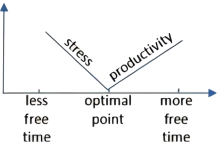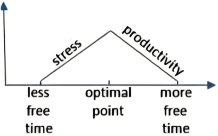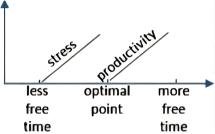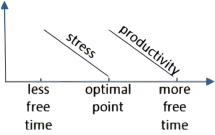1 . From a young age, I was taught to be kind to people around. My parents
Last week, as I left the house for work, I carried with me some
As the car
Once again she
I was thankful that I could
Next time you want to do something nice for someone, don’t
| A.cheerfully | B.confidently | C.particularly | D.smoothly |
| A.difficult | B.rich | C.comfortable | D.fortunate |
| A.find | B.exchange | C.spare | D.abandon |
| A.casual | B.worn | C.old | D.fashionable |
| A.needy | B.clumsy | C.lucky | D.lonely |
| A.pulled | B.stopped | C.approached | D.drew |
| A.wanted | B.ordered | C.touched | D.signaled |
| A.threw | B.collected | C.dragged | D.dropped |
| A.surprised | B.embarrassed | C.panicked | D.worried |
| A.bag | B.pocket | C.car | D.hand |
| A.waved at | B.looked up at | C.shook hands with | D.nodded at |
| A.realized | B.watched | C.recognized | D.noticed |
| A.bottle | B.drop | C.lot | D.cup |
| A.pointed out | B.gave out | C.picked out | D.took out |
| A.satisfaction | B.communication | C.appreciation | D.expectation |
| A.afford | B.offer | C.understand | D.remember |
| A.donations | B.differences | C.senses | D.kindness |
| A.strengthened | B.changed | C.shook | D.destroyed |
| A.hold out | B.hold on | C.hold back | D.hold down |
| A.idea | B.power | C.position | D.opportunity |
2 . A team of engineers at Harvard University in trying to create the first robotic fly. Designed to do what a fly does naturally, the tiny is the size of a fat housefly. Its mini wings allow it to stay in the air and perform controlled flight tasks.
"The added difficulty with a project like this is that actually none of its components is off the shelf and so we have to develop them all on our own’ said Robert Wood, a Harvard engineering professor.
They engineered a series of systems to start and drive the robotic fly. “The seemingly simple system which just moves the wings has a number of interdependencies (相互依赖)on the individual components, each of which individually has to perform well, but then has to be matched well to everything it d connected to,” said Wood.
While this first robotic flyer is linked to a small, off-board power source, the goal is eventually to equip it with a built-in power source, so that it might someday perform data-gathering work at rescue sites,in farmers’ fields or on the battlefield. "Basically it should be able to take off, land and fly around,” he said.
Wood says the design offers a new way to study flight mechanics and control at insect-scale. Yet, the power, sensing and computation technologies on board could have much broader applications.“You can start thinking about using them to answer open scientific questions, you know, to study biology in ways that would be difficult with the animal,but using these robots instead” he said. "So there are a lot of technologies and open interesting scientific questions that are really what drives us on a day-to-day basis.”
1. What is the typical characteristic of the robotic fly?| A.It's automatic. | B.It's very small. |
| C.It's controllable. | D.It's quite powerful. |
| A.act as a spy plane | B.help do farm work |
| C.fly at a very high speed | D.answer many scientific questions |
| A.It is highly questionable. |
| B.It has wide practical applications. |
| C.It gives scientists interest in flying machines. |
| D.It points to a new direction in studying biology. |
| A.Harvand's Study in the Field of Insects. |
| B.A Breakthrough in Engineering Science |
| C.An Interesting Invention 一 Robotic Fly |
| D.Robotic Fly 一 a Copy of Real Life Insect |
3 . Up and down the economic ladder, many Americans who work—and especially those raising kids—are pressed for time, wishing they had more of it to devote to leisure activities (or even just sleeping). At the same time, research has indicated that people who are busy tend to be happier than those who are idle, whether their busyness is purposeful or not.
A research paper released late last year investigated this trade-off, attempting to pinpoint (精确指出) how much leisure time is best. Its authors examined the relationship between the amount of “discretionary time” people had—basically, how much time people spend awake and doing what they want—and how pleased they were with their lives.
The paper, which analyzed data covering about 35,000 Americans, found that employed people’s ratings of their satisfaction with life peaked when they had in the neighborhood of two and a half hours of free time a day. For people who didn’t work, the optimal (最佳) amount was four hours and 45 minutes.
The research traced a correlation (关联) between free time and life satisfaction, but didn’t provide any definitive (最后的) insight into what underlies that correlation—“which is exciting, because this is a work in progress,” says Cassie Mogilner Holmes, a professor at UCLA’s Anderson School of Management and a co-author of the paper, which hasn’t yet been peer-reviewed or published in an academic journal.
An experiment that the researchers arranged hinted at (暗示) a possible explanation of the correlation they found. They asked participants to picture and describe what it would be like to have a certain amount of daily free time, and then report how they’d feel about that allotment (分配). “What we find is that having too little time makes people feel stressed, and maybe that’s obvious,” says Holmes. “But interestingly, that effect goes away—the role of stress goes away—once you approach the optimal point.” After that point, Holmes says, the subjects started to say they felt less productive overall, which could explain why having a lot of free time can feel like having too much free time.
It’s not clear what an individual is to do with these findings, since the amount of free time people have usually has something to do with a variety of factors, such as having children or a degree of control over work schedules. Holmes shared her research with the MBA students in her class on happiness, and some of the most time-crunched among them were comforted by the findings: “I think that two and a half hours creates a nice goal that even if you increase a little bit more of your discretionary time use, you can expect that it will translate into greater life satisfaction.”
1. According to the passage, what happens to Americans occupied with their work?| A.They allow themselves more leisure time. |
| B.They keep themselves busy on purpose. |
| C.They know how much leisure time is best. |
| D.They experience higher level of satisfaction. |
| A.Researchers have cast light on the cause of the correlation. |
| B.Unemployed people need more leisure time to feel content. |
| C.The paper on the correlation has achieved peer recognition. |
| D.Employed people enjoy more leisure time in the neighborhood. |
A. | B. |
C. | D. |
| A.Holmes is optimistic about the influence of her findings |
| B.individuals are encouraged to control their work schedules |
| C.people with tight schedules can’t benefit from the findings |
| D.the MBA students find no free time to obtain life satisfaction |
增加:在缺词处加一个漏字符号(A),并在其下面写出该加的词。
删除:把多余的词用斜线(\)划掉。
修改:在错的词下划一横线,并在该词下面写出修改后的词。
注意:1.每处错误及其修改均仅限一词;
2.只允许修改10处,多者(从第11处起)不计分。
You must have heard about Dolly and have been amazed by the first cloned animal. But here came a problem; should we clone humans? When being asked about this question, a large number of people which are interested in the topic hold the view that it’s beneficial to clone humans. Therefore, some other people, me including, are against this idea. Cloning humans can bring negative effects and wrong informations. In the first place, they may not be treated equal as normal people, which I believe will make him suffer a lot. In second place, human cloning may lead in some social disorder, and it is quite dangerous.
5 . Many shopping malls now have special areas that offer shoppers their first chance to experience “VR technology”. You may have entered one out of curiosity, or you may think it is just another piece of useless technology. Whatever your opinion, VR, or virtual (虚拟的) reality, is going to become a big part of our lives very soon.
2016 saw the introduction of many fancy products in the world of VR, including Microsoft’s HoloLens and Samsung’s Gear VR. All of them offer an exciting look at the new realities and opportunities that VR brings. These, however, are the early days of a technology that is expected to go from strength to strength. And 2017 looks like it is going to be the year in which VR technology really takes off.
For a start, using VR will become more normal in 2017. Microsoft and Intel have already discussed their plans for simpler and less expensive VR headsets.
“The idea of VR will stop being a sci-fi (science-fiction) idea, and instead it will turn into an industry of real products used as ways to show off imagination.” Said Andrew, a designer at US VR Company, Survios. It is also expected that VR products will play a part in more common and real-life fields like fashion and film. For example, to enjoy the atmosphere and energy of the front row experience at a fashion show, fans will no longer have to go along in the flesh. Instead people will be able to enjoy the experience by just wearing a VR headset at home.
You can also expect VR mirrors and fitting-rooms sooner rather than later. “This is an especially good opportunity for brands looking to offer very personalized experiences.” Said Roy De Young from US-based marketing agency, PMX.
As time goes on, there will be less discussion about whether people will accept VR technology. It will simply be a discussion of when.
1. Why do many shopping malls have areas for VR experiences?| A.To collect shoppers’opinions. |
| B.To meet the demands of shoppers. |
| C.To introduce the new technology to shoppers. |
| D.To entertain shoppers with new technology. |
| A.In time | B.In person |
| C.In line | D.In order |
| A.They are not expensive at present. |
| B.They will meet more personal demands. |
| C.They are being used almost everywhere. |
| D.They won’t be accepted for many years. |
| A.VR Meets Our Life Goal | B.VR Mirrors Are Coming |
| C.VR Takes over Fashion | D.VR Is Becoming Real |
6 . It is quite apparent that competition surrounds every aspect of human life whether in the United States or the Amazon rainforest. Without it we would not have grown into primates (灵长类动物) . Or we would probably still be struggling to sharpen a bronze tool while crawling around on four legs in search of meat. Without competition, Columbus wouldn’t have discovered America and Edison would never have invented the light bulb.
Friendship, like all relationships between two people, involves competition. It isn’t competition in a traditional sense because there are no goals to be scored and no prize. Perhaps the ecological definition --- the simultaneous (同时) demand by two or more organisms for limited environmental resources, such as nutrinents, living space, or light --- better explains it.
As in nature, high school life is governed by a set of laws, similar to a shortened version of Darwin’s theory of evolution, overpopulation, and competition. There is an abundance of high school students and to distinguish them, ranking and categorizing (分类) take place. In high school, friendships learn to coexist with competition even though at times the relationship is rough. In fact, in some circumstance, competition is too much of a burden for a friendship to bear, causing it to fall apart. College admission is the final high school objective. Four years of hard work is to achieve good grades, and a student’s fate is determined not only by these achievements, but by the records of thousands of other seniors trying to achieve a similar recognition.
Nevertheless, by necessity, competition between students exists in all aspects of high school life. It sets and improves the standards in everything from sports to schoolwork. A healthy, friendly competition can have only benefits, but when it becomes too fierce, jealousy (妒忌) can tear friendships apart. Yet, despite all this, without competition, we would be lost.
1. What does the ecological definition mainly explain?| A.How to win the competition. | B.What competition exactly is. |
| C.What the result of competition is. | D.How friends compete with each other. |
| A.They know the laws of nature well. | B.Friendship is a burden for them. |
| C.The number of them is too large. | D.They are divided into different groups. |
| A.Friendship is always based on competition. |
| B.Competition is a result of lost friendship. |
| C.Competition is terribly harmful to friendships. |
| D.The degree of competition is vital to friendship. |
| A.Competition is certain to happen at school. |
| B.The result of competition are out of control. |
| C.Competition becomes fierce in high school. |
| D.Friendship is not as important as competition at school. |
7 . Curiosity is at the heart of lifelong learning. It not only gives children an advantage in school, but today’s business leaders agree that it's also at the heart of successful organizations.
Psychologists view curiosity as a life force, vital to happiness, intellectual growth, and well-being.
1.
Often, the temptation(诱惑)is to benefit students when their curiosity leads to a desired outcome or good grade. But it’s more important to notice and strengthen curiosity when you see it in action. When you praise students by describing how their questions and explorations are contributing to their own or classroom learning, you let them know that they are valued for their motivation, regardless of the grade they achieve.
2. Teach students how to ask quality questions.
Quality questions are vital for curiosity; Google, is great at finding answers but doesn’t motivate the formation of questions.
3. Spread the curiosity around.
4. Explore a variety of cultures and societies.
How is one culture or society uniquely different from another one? Encourage students to explore their genetic or emotional links to other cultures.
| A.Value and reward curiosity. |
| B.Teach students to be critical. |
| C.Good questions contain “why,” “what if,” and “how”. |
| D.Why do they relate to certain beliefs or values that other societies hold? |
| E.The greatest advantage of curiosity lies in its power to motivate learning. |
| F.Create opportunities for more curious and less curious students to work together in learning. |
| G.How can students create a new poem, science experiment or product from their explorations? |
8 . We may think we're a culture that gets rid of our worn technology at the first sight of something shiny and new, but a new study shows that we keep using our old devices(装置) well after they go out of style. That’s bad news for the environment — and our wallets — as these outdated devices consume much more energy than the newer ones that do the same things.
To figure out how much power these devices are using, Callie Babbitt and her colleagues at the Rochester Institute of Technology in New York tracked the environmental costs for each product throughout its life — from when its minerals are mined to when we stop using the device. This method provided a readout for how home energy use has evolved since the early 1990s. Devices were grouped by generation — Desktop computers, basic mobile phones, and box-set TVs defined 1992. Digital cameras arrived on the scene in 1997. And MP3 players, smart phones, and LCD TVs entered homes in 2002, before tablets and e-readers showed up in 2007.
As we accumulated more devices, however, we didn't throw out our old ones. "The living-room television is replaced and gets planted in the kids' room, and suddenly one day, you have a TV in every room of the house," said one researcher. The average number of electronic devices rose from four per household in 1992 to 13 in 2007. We're not just keeping these old devices — we continue to use them. According to the analysis of Babbitt's team, old desktop monitors and box TVs with cathode ray tubes are the worst devices with their energy consumption and contribution to greenhouse gas emissions(排放)more than doubling during the 1992 to 2007 window.
So what's the solution(解决方案)? The team's data only went up to 2007, but the researchers also explored what would happen if consumers replaced old products with new electronics that serve more than one function, such as a tablet for word processing and TV viewing. They found that more on-demand entertainment viewing on tablets instead of TVs and desktop computers could cut energy consumption by 44%.
1. What does the author think of new devices?| A.They are environment-friendly. | B.They are no better than the old. |
| C.They cost more to use at home. | D.They go out of style quickly. |
| A.To reduce the cost of minerals. |
| B.To test the life cycle of a product. |
| C.To update consumers on new technology. |
| D.To find out electricity consumption of the devices. |
| A.The box-set TV. | B.The tablet. |
| C.The LCD TV. | D.The desktop computer. |
| A.Stop using them. | B.Take them apart. |
| C.Upgrade them. | D.Recycle them. |
9 . We’ve all been there: in a lift, in line at the bank or on an airplane, surrounded by people who are, like us, deeply focused on their smartphones or, worse, struggling with the uncomfortable silence.
What’s the problem? It’s possible that we all have compromised conversational intelligence. It’s more likely that none of us start a conversation because it’s awkward and challenging, or we think it’s annoying and unnecessary. But the next time you find yourself among strangers, consider that small talk is worth the trouble. Experts say it’s an invaluable social practice that results in big benefits.
Dismissing small talk as unimportant is easy, but we can’t forget that deep relationships wouldn’t
even exist if it weren’t for casual conversation. Small talk is the grease(润滑剂) for social communication, says Bernardo Carducci, director of the Shyness Research Institute at Indiana University Southeast. "Almost every great love story and each big business deal begins with small talk," he explains. "The key to successful small talk is learning how to connect with others, not just communicate with them."
In a 2014 study, Elizabeth Dunn, associate professor of psychology at UBC, invited people on their way into a coffee shop. One group was asked to seek out an interaction(互动) with its waiter; the other, to speak only when necessary. The results showed that those who chatted with their server reported significantly higher positive feelings and a better coffee shop experience. "It’s not that talking to the waiter is better than talking to your husband," says Dunn. "But interactions with peripheral(边缘的) members of our social network matter for our well-being also."
Dunn believes that people who reach out to strangers feel a significantly greater sense of belonging, a bond with others. Carducci believes developing such a sense of belonging starts with small talk. "Small talk is the basis of good manners," he says.
1. What phenomenon is described in the first paragraph?| A.Addiction to smartphones. |
| B.Inappropriate behaviours in public places. |
| C.Absence of communication between strangers. |
| D.Impatience with slow service. |
| A.Showing good manners. | B.Relating to other people. |
| C.Focusing on a topic. | D.Making business deals. |
| A.It improves family relationships. | B.It raises people’s confidence. |
| C.It matters as much as a formal talk. | D.It makes people feel good. |
| A.Conversation Counts | B.Ways of Making Small Talk |
| C.Benefits of Small Talk | D.Uncomfortable Silence |
10 . Regrets are often painful. A study suggests that some people can overcome them, said Jia Wei Zhang, a psychology graduate at the University of California. But this isn’t the case for everyone, he said.
The researchers wondered why some people report feeling improvement from regrets but others don’t. Does it lie in how people approach their regrets?
In the study, the researchers focused on self-compassion (自我同情) as a potential factor in why some people have an easier lime leaving their regrets behind them.
400 people attended an experiment. First, they were asked to write about their biggest regret. Half wrote something they did but wish they hadn’t done; the other half wrote something they didn’t do but wish they had. Then, the participants were randomly assigned to one of three groups: self compassion, self-esteem and a control group. The self-esteem group was asked to respond by “talking to yourself about this regret from the aspect of confirming your positive qualities”.
The control group was asked to write about their favorite hobby rather than their regret. Then, they were asked about their feelings of forgiveness, acceptance and personal improvement following the exercise.
They found that the self-compassion group reported greater feelings of acceptance, forgiveness and personal improvement, compared with the control group and the self esteem group. In other words, focusing on your best qualities is not what helps you feel better about a regret. Rather, being compassionate toward yourself is what may make a difference, the researchers found.
It’s possible that people who practice self-compassion are able to confront their regrets and see what went wrong, so they can make a better choice in the future, Zhang told Live Science. Self-compassion pushes people to accept their regret instead of running away from it.
The researchers used an example of this from a previous study on breast cancer patients who were asked to try thinking about their treatment in a positive light before it began. The women who did so reported greater feelings of personal growth later on.
1. What does the underlined word “confront” in Paragraph 7 mean?| A.Handle | B.Forget. |
| C.Ignore | D.Show. |
| A.Think of a way out. | B.Write about their regrets. |
| C.Record their favorite hobbies. | D.Treat their regrets in positive ways. |
| A.To cover up their regrets. |
| B.To see if they have weaknesses. |
| C.To see if they have self compassion. |
| D.To help them feel better about their regrets. |
| A.To show the method of the research. |
| B.To show the value of the acceptance. |
| C.To show the truth of people’s feeling. |
| D.To show the difficulty of the research. |



